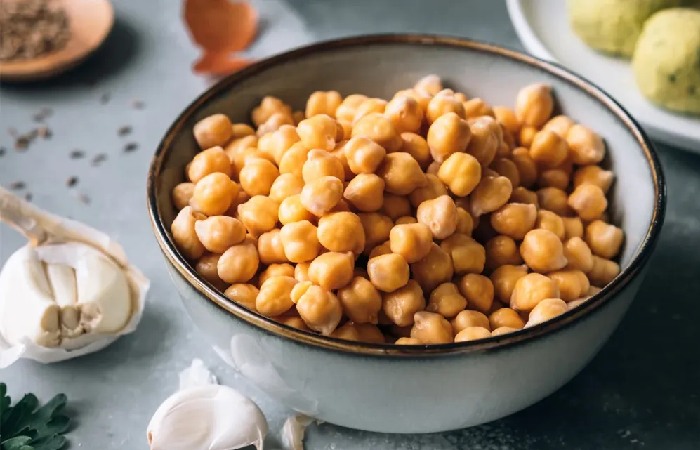Healthiest Ingredients – Add these to your cooking repertoire for an instant boost to your health.
When it comes to geographic areas known for their healthy eating habits. The Mediterranean diet probably the best known, and the Nordic diet has also received some attention. But there is another continent where traditional cuisine has many health benefits: India.
Food can vary depending on the specific area it originates from in India. Many common ingredients in Indian cuisine, including millet (a whole grain), lentils, spices, and vegetables, are not as prevalent in other cuisines, according to a paper published by researchers at the Indian Institute of Technology in Jodhpur. Still, in general, they use a lot of plant-based proteins like beans and lentils, whole grains, and fermented foods, including yogurt. According to the document, it’s not shocking that Indian food includes so many good-for-you ingredients because Ayurveda, India’s traditional medicinal system, root in the idea that food has nutritional and medicinal value. However, Indian food is regularly associated with takeout, much more than deep-fried samosas and rich sauces.
The ingredients below are the healthiest you will find in Indian cooking, but they can be used in other recipes.
1 Turmeric
Why It’s Healthy This golden-yellow spice uses for thousands of years in India, both in food and for its medicinal benefits. According to a study available in Advances in Experimental Medicine and Biology. Its active chemical compound, curcumin, has been revealed to have anti-inflammatory and antioxidant properties. While much of the research on curcumin so far has only been done in animals, a human trial with 60 participants indicated that taking a curcumin supplement may be a safe and effective treatment for major depressive disorder.
How To Use It Turmeric usually added to most vegetables, beans, lentils, and other Indian dishes. It can support to use it in conjunction with other spices, and not just from a flavor perspective. Adding black pepper to a turmeric dish can improve curcumin absorption by 2,000 percent, given to a study published in October 2017 in the journal Foods. You can also try mixing a little of the spice with warm milk to make a golden latte.
Healthiest Ingredients
2 Chickpeas (Chana)

Why They’re Healthy People who eat these legumes regularly have shown to have higher intakes of essential nutrients, with dietary fiber, healthy fats, folate, magnesium, potassium, iron, and vitamins A, E, and C, compared to with which you do not eat chickpeas. According to a study published in December 2016 in Nutrients. And whereas chickpeas are often associated with hummus, they use in some ways in Indian cuisine. Whole chickpeas are soaked and cooked with spices, roasted dried chickpeas are enjoyed as a snack, and dried, roasted chickpea flour is used to make pancakes, meatballs, and candy. Because chickpeas are high in protein plus fiber (half a cup has further than 7 grams of protein and extra than 6 grams of fiber. According to USDA data), they can help you feel full longer and maintain your intake. Total calories under control.
How to use them Stab the Indian dish chana masala or have roasted dried chickpeas as a snack. If you’ve never used chickpea flour, try making pancakes or crepes.
Healthiest Ingredients
3 Mung Beans
Why They’re Healthy, These little green beans aren’t that common in western cuisine, but they should be. According to USDA data, half a cup is a good source of protein and fiber, with about 7 grams of each. According to learning published in the Journal of Food Science. These beans are also high in antioxidants and minerals linked to health benefits. And unlike many other beans, the carbohydrates in mung beans seem to be easier to digest. So eating them doesn’t cause the usual digestive side effects. Conferring to a study published in the Journal of the Science of Food plus Agriculture.
In what way to Use Them In Indian cuisine, mung beans prepare in different ways. Traditionally they cooked with garlic, ginger, and spices in a soup served with rice or cabbage as a salad with chopped vegetables. Try mung beans instead of other lentils in a recipe, or add sprouted mung beans to your salads for more protein and fiber.
Healthiest Ingredients
4 Kidney Beans (Rajma)
Why They’re Healthy Research has shown that eating these organ-shaped kidney beans has been linked to a lower incidence of chronic diseases such as diabetes, cancer, obesity, and heart disease. Agreeing with a study published in November 2017 in the International Journal of Molecular Sciences. They are inclined to be lower in carbohydrates than other beans. Beans contain resistant starch, a fiber-like substance that resists digestion. Research published in Diabetic Medicine shows that it can help improve insulin sensitivity and potentially affect gut health. According to learning published in the September-October 2017 issue of the journal mBio.
Rajma masala typical Indian red bean cooked in a spicy sauce with onions and tomatoes. You can also add beans to salads, add them to soup and chili, or use them in place of meat in curries, otherwise tacos.
Healthiest Ingredients
5 Lentils (Daal)
Why They’re Healthy These flat, disc-shaped seeds come in a change of colors and flavors and are a great source of vegetable protein. According to the United Nations Food plus Agriculture Organization. More than a quarter of the calories in lentils come from protein. According to USDA data, they’re also an excellent plant-based source of iron, at over 3 grams per half-cup. Lentils are high in solvable fiber. Which can lower LDL (“bad”) cholesterol and may help with blood sugar control, according to Today’s Dietitian. And you can feel perfect when you eat it because it’s an ecologically sustainable culture. According to a report published in Frontiers in Sustainable Food Systems in October 2019.
In Indian cuisine, lentils typically prepared with spices and served with rice or roti. You can also add lentils to soups and salads, mix them in veggie burgers, or puree them for a dip.


